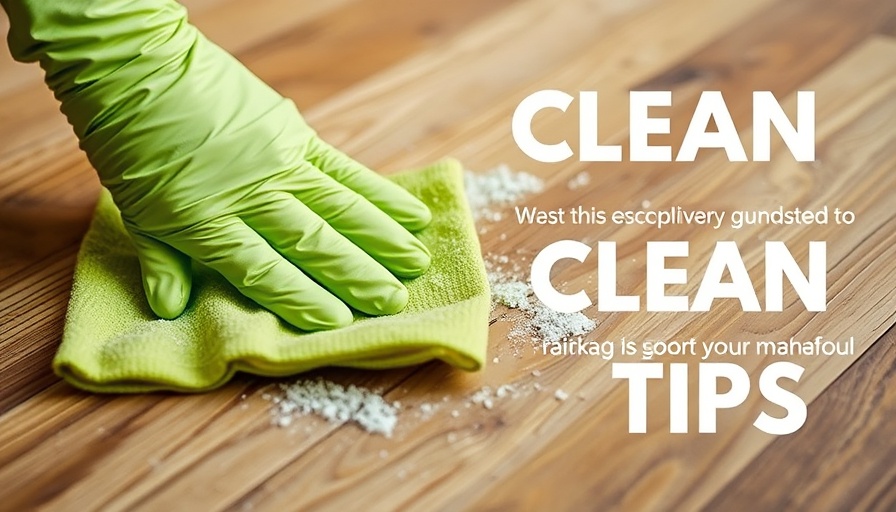
The Hidden Dangers of Improper Home Cleaning
Cleaning your home should create a safer and more pleasant environment, yet many homeowners inadvertently adopt practices that can lead to greater issues. From poor indoor air quality to damaging surfaces, understanding the common cleaning mistakes is key.
A Risky Routine: Cleaning Products Matter
Using inappropriate cleaning products on various surfaces can cause irreversible damage. For instance, applying bleach on stainless steel, which can cause pitting and discoloration, is a frequent mistake. Instead of throwing harmful chemicals around haphazardly, keep a cheat sheet handy! Familiarize yourself with which cleaning agents are suitable for each surface—pH-neutral cleaners for natural stones and specific wood cleaners for wood surfaces are safe bets. Always test new products in inconspicuous areas to avoid drastic errors.
Dust Bunnies: Unseen Threats That Need Attention
While we may dust our coffee tables regularly, we often neglect the hidden areas of our homes where dust collects. Research by Health Canada highlights that indoor air can be significantly more polluted than outdoor air, primarily due to dust. Don't forget to focus your efforts on ceiling fan blades, the tops of cabinets, and hidden spaces behind heavy furniture. Incorporating these areas into your regular cleaning schedule is essential for maintaining the purity of your indoor air.
Vacuuming Done Right: Techniques to Embrace
Vacuuming may seem simple, but improper techniques can diminish the effectiveness of your efforts and damage your floors. Whether you're rushing through the task or using the wrong vacuum settings, the results can be less than stellar. Learn to take your time, utilizing the right height settings for different floor types. Remember to empty canisters or change bags regularly to keep your vacuum working efficiently.
The Importance of Regular Maintenance
Routine maintenance is crucial in preserving your home's cleanliness and health. Research indicates that changing HVAC filters every three months can notably enhance your indoor air quality. Avoid situations where dust and allergens build up by adapting your cleaning schedule to include hidden areas that typically go ignored.
Practical Tips to Enhance Your Cleaning Routine
Consider investing in high-quality cleaning tools such as extendable dusters and specialized vacuum attachments for difficult spots like air vents and baseboards. These can make a significant difference in your cleaning routine, ensuring that no area remains untouched.
Feeling Overwhelmed? Simplifying Your Approach
If cleaning feels daunting, remember that breaking it down into manageable tasks can ease the burden. Create a cleaning checklist that addresses both visible and hidden areas. This could be a rewarding family project that fosters bonding over shared responsibilities. When everyone is involved, cleaning becomes less of a chore and more of a community effort.
Take Action to Transform Your Space
By recognizing and addressing these common home cleaning mistakes, you not only enhance your living environment but also ensure the longevity of your home and its surfaces. Regular updates to your cleaning habits based on best practices and an understanding of your space can lead to profound improvements.
To get started on your newly informed cleaning journey, take immediate action! Revise your cleaning supplies, develop a deep cleaning schedule, and motivate your household to participate in the upkeep of your shared environment. Small changes can lead to monumental benefits!
 Add Row
Add Row  Add
Add 



Write A Comment